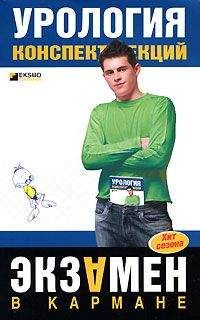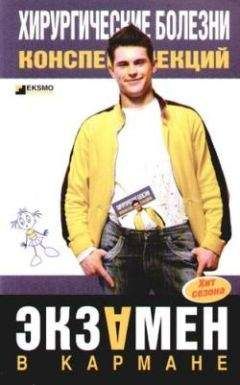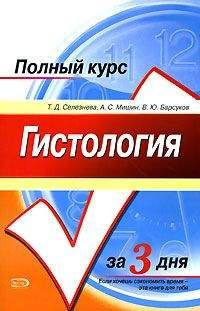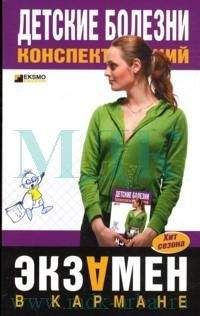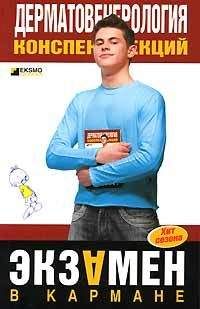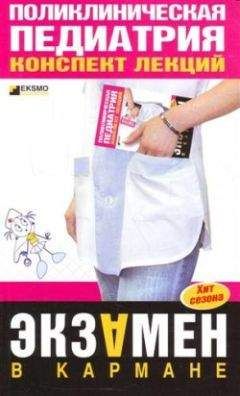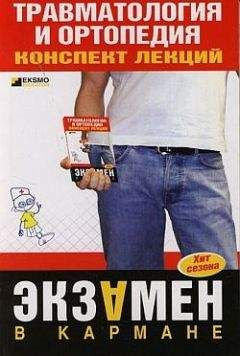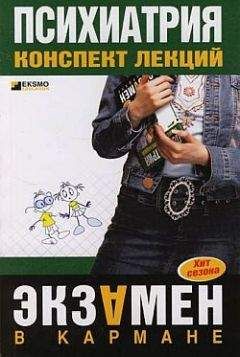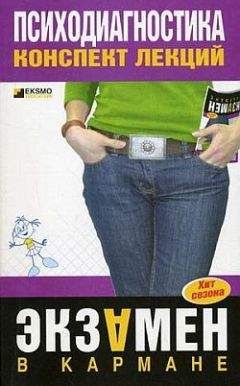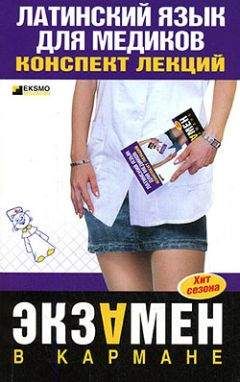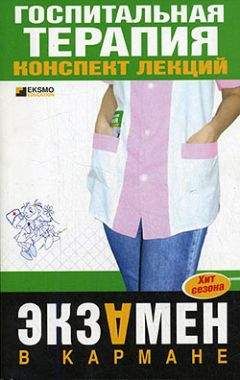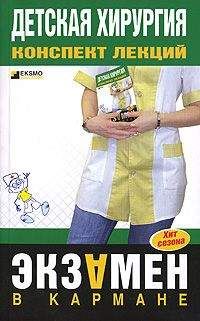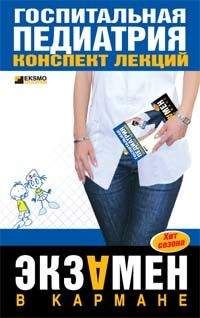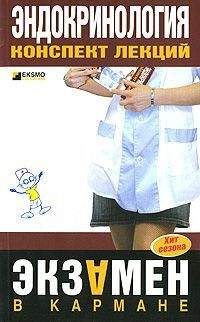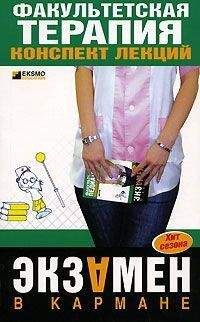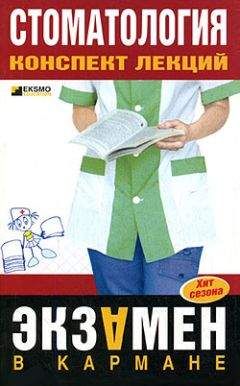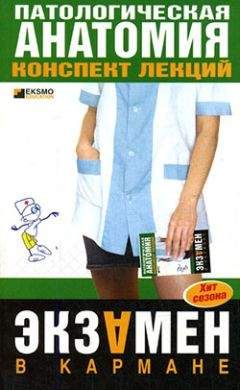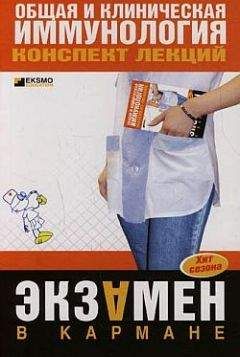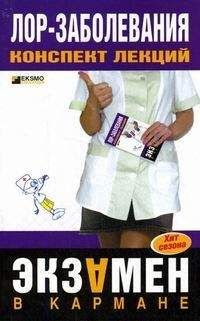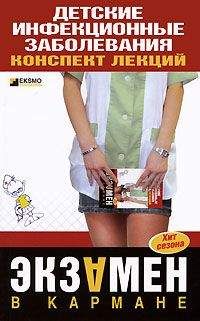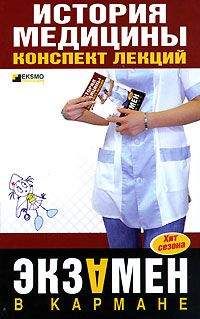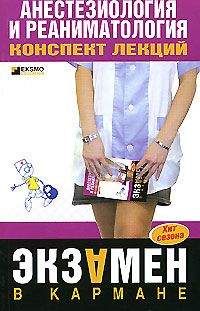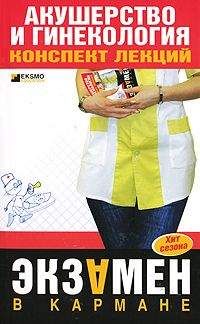Елена Беликова - Английский язык для медиков: конспект лекций
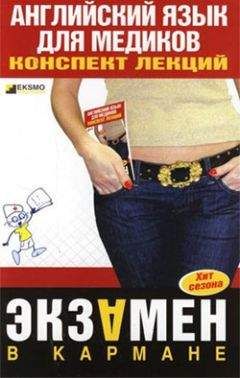
Все авторские права соблюдены. Напишите нам, если Вы не согласны.
Описание книги "Английский язык для медиков: конспект лекций"
Описание и краткое содержание "Английский язык для медиков: конспект лекций" читать бесплатно онлайн.
Представленный вашему вниманию конспект лекций предназначен для подготовки студентов медицинских вузов к сдаче экзамена. Книга включает в себя полный курс лекций по английскому языку, написана доступным языком и будет незаменимым помощником для тех, кто желает быстро подготовиться к экзамену и успешно его сдать.
Group 4: Muscles of the soft palate. All but one of the muscles of the palate are supplied by CNs X and XI (cranial portion). The sole exception is the tensor veli palatini, which is supplied CN V3.
Group 5: Infrahyoid muscles. All but one of the infrahyoid muscles are supplied by the ansa cervicalis of the cervical olexus (C1, C2, and C3). The exception is the thyrohyoid, which is supplied by a branch of C1. (This branch of C1 also supplies the geniohyoid muscle).
New words
neck – шея
cervical – цервикальный
vertebrae – позвоночник
transverse – поперечный
artery – артерия
vein – вена
atlas – атлант (первый шейный позвонок)
axis – ось
movement – движение
joint – сустав
to allow – позволять
lateral – боковой
rotation – вращение
head – голова
cricoid cartilage – перстневидный хрящ гортани
posterior – следующий
triangle – треугольник
subdivided – подразделен
scapulae – лопатка
medial – медиальный
scalene – лестничная мышца
brachial plexus – плечевое сплетение
to receive – получать
vagus nerve – блуждающий нерв
hypoglossal nerve – подъязычный нерв
laryngeal branches – гортанные ветви
Запомните следующие застывшие словосочетания.
Застывшие словосочетания Таблица 3.
Заполните пропуски, где необходимо.
1. Every day my husband goes to… work, my son goes to… school and I go to… institute.
2. There is… new school at… corner of our street.
3. My daughter came… home from… school on. Monday and said to me: «There will be… parentsmeeting on… tenth of February at six o'clock in… evening.
4… teacher told us… very interest ing story at… lesson.
5. When… bell rang, pupils went into… classroom.
6. We are usually at… school from nine o'clock in… morning till two o'clock in… afternoon.
7. We don't go to… school on… Sunday.
8. What do you do after… breakfast? – After… breakfast I go to… school.
9. My granny likes to read I… book after… lunch.
10… people usually have… breakfast in… morning.
11. They have. dinner in. afternoon.
12. In… evening… people have.supper.
13. Who cooks… dinner in your family?
14. Yesterday father told us… very interesting story at… breakfast.
15. What did you have for… lunch at… school Wednesday?
16. We had… salad and. tea.
17. My mother never has… supper with… family.
18. She does not like to eat in… evening.
19. When do you clean your teeth in… morning: before breakfast or after. breakfast?
20. Usually I have… tea for… lunch.
Answer the questions.
1. How many vertebrae are in the cervical vertebrae?
2. How many of them are atypical?
3. How is the first cervical vertebra called?
4. How is the second cervical vertebra called?
5. What does the second cervical vertebra have?
6. What movement pivot joint allows to do?
7. What is the form of hyoid bone?
8. Where is subclavian triangle located?
9. With help of what is digastric triangle bound by?
10. What are the fascias of the neck?
Make the sentences of your own using the new words (10 sentences).
Find the definite and indefinite articles in the text.
ЛЕКЦИЯ № 14. Thoracic wall
There are 12 thoracic vertebrae. The vertebrae have facets on their bodies to articulate with the heads of ribs; each rib articulates with the body of the numerically corresponding vertebra and the one below it. The thoracic vertebrae have faces on their transverse processes to articulate with the tubercles of the numerically corresponding ribs. Sternum: the manubrium articulates with the clavicle and the first rib. It meets the body of the sternum at the sternal angel an important clinical landmark.
The body articulates directly with ribs 2-7; it articulates interiorly with the xiphoid process at the xiphisternal junction. The xiphoid process is cartilaginous at birth and usually ossifies and unites with the body of the sternum around age 40.
Ribs and costal cartilages: there are 12 pairs of ribs, which are attached posteriorly to thoracic vertebrae.
Ribs 1-7 are termed «true ribs» and attach directly to the sternum by costal cartilages.
Ribs 8-10 are termed «false ribs» and attach to the costal cartilage of the rib above. Ribs 11 and 12 have no anterior attachments, and are therefore classified as both «floating ribs» and false ribs. The costal groove is located along the inferior border of each rib and provides protection for the intercostal nerve artery, and vein, ribs 1, 2, 10, 11, and 12 are atypical. Muscles: external intercostal muscles.
There are 11 pairs of external intercostal muscles. Their fibers run anteriorly and inferiorly in the intercostal spaces from the rib above to the rib below.
These muscles fill the intercostal spaces from the tubercles of ribs posteriorly to the costochondral junctions anteriorly; they are replaced anteriorly by external intercostal membranes. Internal intercostal muscles: there are 11 pairs of internal intercostal muscles. Their fibers run posteriorly and inferiorly in the intercostal spaces deep to the external layer.
These muscles fill the intercostal spaces anteriorly from the sternum to the angles of the ribs posteriorly; they are replaced posteriorly by internal intercostal membranes.
Innermost intercostal muscles: the deep layers of the internal intercostal muscles are the innermost intercostal muscles.
These muscles are separated from the internal intercostal muscles by intercostal nerves and vessels.
Subcostalis portion: Fibers extend from the inner surface of the angle of one rib to the rib that is inferior to it.
Fibers may cross more than one intercostal space, Transversus tho-racis portion: Fibers attach posteriorly to the sternum. Fibers cross more than one intercostal space.
Internal thoracic vessels, branches of the subclavian arteries, run anterior to these fibers. Intercostal structures
Intercostal nerves: there are 12 pairs of thoracic nerves, 11 intercostal pairs, and 1 subcostal pair.
Intercostal nerves are the ventral primary rami of thoracic spinal nerves. These nerves supply the skin and musculature of the thoracic and abdominal walls.
Intercostal arteries: there are 12 pairs of posterior and anterior arteries, 11 intercostal pairs, and 1 subcostal pair.
Anterior intercostal arteries.
Pairs 1-6 are derived from the internal thoracic arteries.
Pairs 7-9 are derived from the musculophrenic arteries.
There are no anterior intercostal arteries in the last two spaces; these spaces are supplied by branches of the pos terior intercostal arteries.
Posterior intercostal arteries: the first two pairs arise from the superior intercostal artery, a branch of the costocervical trunk of the subcla vian artery.
Nine pairs of intercostal and one pair of subcostal arter ies arise from the thoracic aorta.
Intercostal veins: Anterior branches of the intercostal veins drain to the internal thoracic and musculophrenic veins.
Posterior branches drain to the azygos system of veins.
Lymphatic drainage of intercostal spaces: anterior drainage is to the internal thoracic (parasternal) nodes.
Posterior drainage is to the paraaortic nodes of the poste rior mediastinum.
New words
thoracic – грудной
wall – стенка
below – под
sternum – грудина
clavicle – ключица
xiphisternal – грудинный
true – правдивый
false – фальшивый
groove – углубление
above – над
anteriorly – раньше
intercostal – межреберный
subcostal – подкостный
portion – часть
transversus – поперечный
musculophrenic – мышечный грудобрюшной
paraaortic – парааортальный
mediastinum – средостение
Запомните следующее застывшее словосочетание.
I to watch _ TV
Если перед существительным стоит вопросительное или относительное местоимение, артикль опускается.
E. g. What colour is your cat?
I want to know what _ book you are reading.
Заполните пропуски, где необходимо.
1. My… aunt and my… uncle are… doctors.
2. They work at… hospital.
3. They get up at seven o'clock in… morning.
4. They go to… bed at eleven o'clock.
5. I work in… morning and in. after noon.
6. I don't work in… evening. I sleep at… night.
7. When do you leave… home for… school?
8. I leave… home at… quarter past eight in… morning.
9. What does your mother do after… breakfast?
10. She goes to… work.
11. Is there… sofa in your… living-room?
12. Yes, there is… cosy little… sofa in… living-room.
13. Where is… sofa? – It is in… corner of… room to… left of… door.
14. I like to sit on this… sofa in… front of… TV-set in… evening.
15. There is… nice coffee-table near… window.
16. There are… newspapers on… coffee-table.
17. There is… tea in… glass.
18. When do you watch… TV? – I watch TV in… evening.
19. We have… large colour TV-set in our… room.
20. There is. beautiful vase on… TV-set. There are… flowers in… vase.
Answer the questions.
1. How many thoracic vertebrae are there?
2. What does each rib articulate with?
3. What does the manubrium articulates with?
4. With how many ribs does the body articulates directly?
5. How many pairs of ribs are there?
6. How are termed ribs 1-7?
7. How are termed ribs 8-10?
8. How are classified ribs 11-12?
9. How many pairs of thoracic nerves are there?
10. What does intercostal nerves supply?
Make the sentences of your own using the new words (10 sentences).
Find the definite and indefinite articles in the text.
ЛЕКЦИЯ № 15. Blood
Blood is considered a modified type of connective tissue. Mesoder-mal in origin, it is composed of cells and cell frag ments (erythrocytes, leukocytes, platelets), fibrous proteins (fibrinogen – fibrin during clotting), and an extracellular amorphous ground substance of fluid and proteins (plasma). Blood carries oxygen and nutrients to all cells of the body and waste materials away from cells to the kidney and lungs. It also contains cellular elements of the immune system as well as humoral factors. This chapter will discuss the differ ent elements of blood and the processes by which they are formed.
Formed elements of the blood
The formed elements of the blood include erythrocytes, leukocytes, and platelets.
Erythrocytes, or red blood cells, are important in trans porting oxygen from the lungs to tissues and in returning carbon dioxide to the lungs. Oxygen and carbon dioxide carried in the RBC combine with hemoglobin to form oxyhemoglobin and carbaminohemoglobin, respectively.
Mature erythrocytes are denucleated, biconcave disks with a diameter of 7-8 mm. The biconcave shape results in a 20-30% increase in sur face area compared to a sphere.
Erythrocytes have a very large surface area: volume ratio that allows for efficient gas transfer. Erythrocyte membranes are remarkably pliable, enabling the cells to squeeze through the narrowest capillaries. In sickle cell anemia, this plasticity is lost, and the subsequent clogging of capillaries leads to sickle crisis. The normal concentration of erythrocytes in blood is 3,5-5,5 million/mm3 in women and 4,3– 5,9 million/mm3 in men. Higher counts in men are attributed to the erythrogenic androgens. The packed volume of blood cells per total volume of known as the hematocrit. Normal hematocrit values are 46% for women and 41-53% for men.
When aging RBCs develop subtle changes, macrophages in the bone marrow, spleen, and liver engulf and digest them. The iron is carried by transferring in the blood to certain tissues, where it combines with apoferritin to form ferritin. The heme is catabolized into biliver-din, which is converted to bilirubin. The latter is secreted with bile salts.
Leukocytes, or white blood cells, are primarily with the cellular and humoral defense of the organism foreign materials. Leukocytes are classified as granulocytes (neutrophils, eosinophils, basophils) and agranulocytes (lympmonocytes).
Granulocytes are named according to the staining properties of their specific granules. Neutrophils sare 10-16 mm in diameter.
They have 3-5 nuclear lobes and contain azurophilic granules (ly-sosomes), which contain hydrolytic enzymes for bacterial destruction, in their cytoplasm. Specific granules contain bactericidal enzymes (e. g., lysozyme). Neutrophils are phagocytes that are drawn (chemo-taxis) to bacterial chemoattractants. They are the primary cells involved in the acute inflammatory response and represent 54-62% of leukocytes.
Eosinophils: they have a bilobed nucleus and possess acid granulations in their cytoplasm. These granules contain hydrolytic enzymes and peroxidase, which a discharged into phagocytic vacuoles.
Eosinophils are more numerous in the blood durii asitic infections and allergic diseases; they norma asent onlyi – 3% of leukocytes.
Basophils: they possess large spheroid granules, which are basophi-lic and metachromatic, due to heparin, a glycosaminoglycan. Their granules also contain histamine.
Basophils degranulate in certain immune reaction, releasing hepa-rin and histamine into their surroundings. They also release additional vasoactive amines and slow reacting substance of anaphylaxis (SRS-A) consisting of leukotrienes LTC4, LTD4, and LTE4. They represent less than 1% – of leukocytes.
Agranulocytes are named according to their lack of specific granules. Lymphocytes are generally small cells measuring 7-10 mm in diameter and constitute 25-33% of leukocytes. They con tain circular dark-stained nuclei and scanty clear blue cyto plasm. Circulating lymphocytes enter the blood from the lymphatic tissues. Two principal types of immunocompetent lymphocytes can be identified using im-munologic and bio chemical techniques: T lymphocytes and В lymphocytes.
T cells differentiate in the thymus and then circulate in the peripheral blood, where they are the principal effec tors of cell-mediated immunity. They also function as helper and suppressor cells, by modulating the immune response through their effect on В cells, plasma cells, macrophages, and other T Cells.
Подписывайтесь на наши страницы в социальных сетях.
Будьте в курсе последних книжных новинок, комментируйте, обсуждайте. Мы ждём Вас!
Похожие книги на "Английский язык для медиков: конспект лекций"
Книги похожие на "Английский язык для медиков: конспект лекций" читать онлайн или скачать бесплатно полные версии.
Мы рекомендуем Вам зарегистрироваться либо войти на сайт под своим именем.
Отзывы о "Елена Беликова - Английский язык для медиков: конспект лекций"
Отзывы читателей о книге "Английский язык для медиков: конспект лекций", комментарии и мнения людей о произведении.






